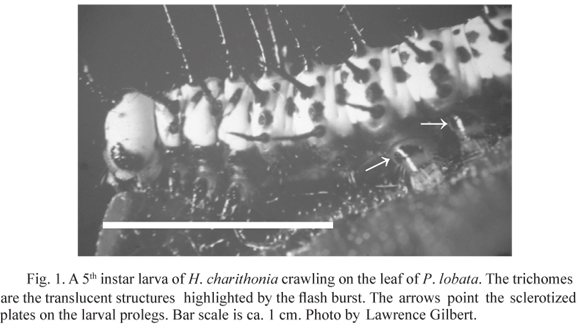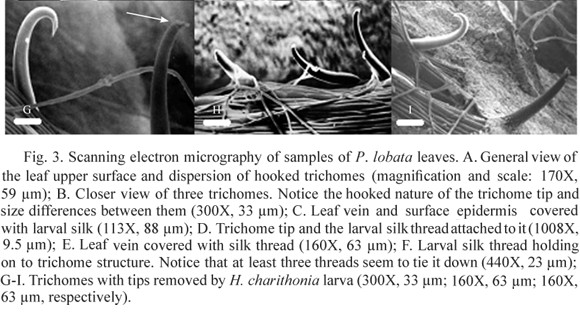Trichomes reduce herbivore attack on plants by physically and/or chemically inhibiting movement or other activities. Despite evidence that herbivores are negatively affected by trichomes there also reports of insect counter-adaptations that circumvent the plant’s defense. This paper reports on a study that investigated the likely mechanisms employed by larvae of the nymphalid butterfly, Heliconius charithonia (L.), that allow it to feed on a host that is presumably protected by hooked trichomes (Passiflora lobata (Killip) Hutch). Evidence were gathered using data from direct observations of larval movement and behavior, faeces analysis, scanning electron microscopy of plant surface and experimental analysis of larval movement on plants with and without trichomes (manually removed). The latter involved a comparison with a non specialist congener, Heliconius pachinus Salvin. Observations showed that H. charithonia larvae are capable of freeing themselves from entrapment on trichome tips by physical force. Moreover, wandering larvae lay silk mats on the trichomes and remove their tips by biting. In fact, trichome tips were found in the faeces. Experimental removal of trichomes aided in the movement of the non specialist but had no noticeable effect on the specialist larvae. These results support the suggestion that trichomes are capable of deterring a non specialist herbivore (H. pachinus). The precise mechanisms that allow the success of H. charithonia are not known, but I suggest that a blend of behavioral as well as physical resistance mechanisms is involved. Future studies should ascertain whether larval integument provides physical resistance to trichomes.
Herbivory; mechanical defense; insect-plant interaction





